Aston Martin Valhalla is a next generation supercar
It’s a symphony of swoops and curves
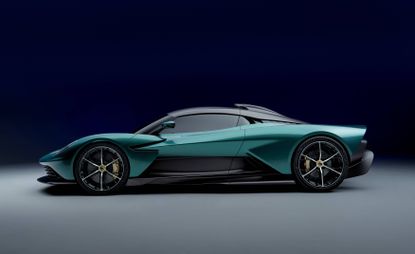
This is the new Aston Martin Valhalla, the final production-ready version of the company’s latest hybrid supercar. The first iteration of Valhalla broke cover at the Geneva Motor Show in March 2019, way back in another era for both Aston Martin and the wider world. New management, ownership and strategy have all led to the Valhalla concept getting a thorough overhaul under the auspices of the company’s new CEO, Tobias Moers and Chief Creative Officer, Marek Reichman. The result is a supercar struck through with cutting edge tech, as befits a company that is now very much part of Formula One.
Valhalla will be powered by a bespoke twin turbo V8 in combination with two electric motors, a shift from the original plan to use an all-new Aston Martin-designed V6 hybrid. That engine concept is no more, so instead the V8 comes – suitably customised – from Mercedes-AMG, which already supplies a regular V8 for AM’s DB11, DBX and Vantage models. Under the skin, the Valhalla is closely related to the Valkyrie, the company’s flagship hypercar. Both have been shaped by Formula One technology and knowhow, particularly in terms of aerodynamics and materials, but the Valkyrie will be built in strictly limited numbers (150 road cars, plus a few variations), costing from around £2.5m. Valhalla exists in slightly less mythical realm, and production numbers should be substantially bigger, although you can still expect a high six figure price tag. It’s still very much a stepping stone on the way to a ‘regular’ mid-engined Aston, which should surface mid-decade in the form of the next-generation Vanquish.
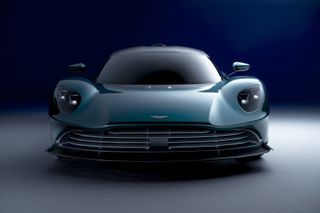

The first thing to note is that the production Valhalla has ramped up the signature Aston Martin design cues, losing the concept’s rather anonymous, albeit striking, mid-engine layout and proportions. The cabin is wider and less of a squeeze than the concept, with a view to making it more of an everyday proposition. There’s a more prominent grille than on the original concept, referencing one of the marque’s defining qualities, and the headlights have also been made larger to balance this out. The lower body and rear end of the car are defined by great rippling swathes of carbon fibre to shape and steer the air towards the rear diffuser. By placing the aerodynamic surfaces closer to the ground, Aston Martin’s design team has been given the freedom to create a clean, dramatically proportioned body shape above. It’s a symphony of swoops and curves, with surfaces diving beneath one another as the panels make their way down the flanks of the car. The doors hinge forwards and cut into the roof for easier access to the as-yet unrevealed interior, and there's plenty of exposed ultra-light carbon fibre, inside and out.

The 4.0 litre V8 develops 750 PS and is supplemented by an e-motor on the front and back axle, adding another 204 PS for a colossal combined power output. Despite the presence of batteries, the weight is still relatively low, and the plug-in hybrid system offers a modest zero-emission range of around 10 miles. With all systems turned up to max, there’s a promised 0-62mph sprint of 2.5 seconds and a top speed of around 217 mph. Weight saving include the ‘e-reverse’ mode which does away with a conventional reverse gear in favour of electric-only backward travel. That the Valhalla design places such emphasis on downforce is a key learning from Formula One; Aston Martin wants to increase the synergy between its mid-engined range and the racetrack. The company is emphatic that Valhalla is a car designed to be driven – preferably on a track.
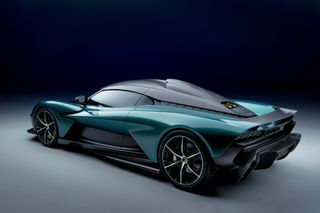
We’re many months away from getting behind the wheel of this next generation machine. With form and spec locked in place, the company is starting the process of locking in the required function. Based on this reveal, there’s every indication that Aston Martin will continue to hold its head up high as a supplier of supreme objects of desire.
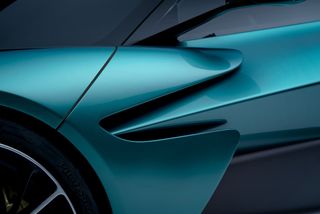
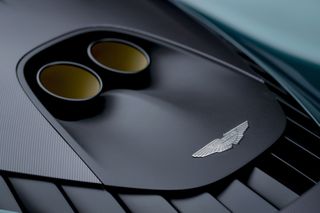

INFORMATION
Aston Martin Valhalla, pricing tbc
Wallpaper* Newsletter
Receive our daily digest of inspiration, escapism and design stories from around the world direct to your inbox
Jonathan Bell has written for Wallpaper* magazine since 1999, covering everything from architecture and transport design to books, tech and graphic design. He is now the magazine’s Transport and Technology Editor. Jonathan has written and edited 15 books, including Concept Car Design, 21st Century House, and The New Modern House. He is also the host of Wallpaper’s first podcast.
-
 Aesop’s Salone del Mobile 2024 installations in Milan are multisensory experiences
Aesop’s Salone del Mobile 2024 installations in Milan are multisensory experiencesAesop has partnered with Salone del Mobile to launch a series of installations across Milan, tapping into sight, touch, taste, and scent
By Hannah Tindle Published
-
 Dial into the Boring Phone and more smartphone alternatives
Dial into the Boring Phone and more smartphone alternativesFrom the deliberately dull new Boring Phone to Honor’s latest hook-up with Porsche, a host of new devices that do the phone thing slightly differently
By Jonathan Bell Published
-
 Berlinde De Bruyckere’s angels without faces touch down in Venice church
Berlinde De Bruyckere’s angels without faces touch down in Venice churchBelgian artist Berlinde De Bruyckere’s recent archangel sculptures occupy the 16th-century white marble Abbazia di San Giorgio Maggiore for the Venice Biennale 2024
By Osman Can Yerebakan Published
-
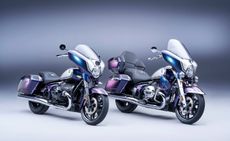 BMW Motorrad brings out the big guns for its newest cruisers
BMW Motorrad brings out the big guns for its newest cruisersBMW Motorrad R 18 Bagger and Transcontinental set the tone for high-voltage cruising with a brand collaboration with speaker specialist Marshall
By George Chapman Last updated
-
 Is McLaren’s GT a sports car, a tourer, or the best of both?
Is McLaren’s GT a sports car, a tourer, or the best of both?The McLaren GT is a capable all-rounder dressed up in svelte supercar clothes. It might also be the last of its type
By Jonathan Bell Last updated
-
 Hyundai Ioniq 6 EV is a sleek, stylish streamliner
Hyundai Ioniq 6 EV is a sleek, stylish streamlinerTake a first look at the Hyundai Ioniq 6 EV – stripped-back, streamlined, but retaining an interior that’s a ‘mindful cocoon’
By Jonathan Bell Last updated
-
 Audi RS3 Sportback is tomorrow’s classic today
Audi RS3 Sportback is tomorrow’s classic todayIt may be one of the last of its ICE kind, but cars like the Audi RS3 Sportback represent the summit of a century’s evolution – and are a convincing reminder as to how far EVs still need to evolve
By Jonathan Bell Published
-
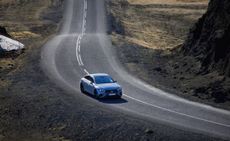 Mercedes EQE tiptoes around a revolution to inch EV design forwards
Mercedes EQE tiptoes around a revolution to inch EV design forwardsWe road test the new Mercedes-Benz EQE, the car that may ease the Mercedes E-Class customer into the electric age – balancing the formal experimentation that EVs allow with the familiar
By Nick Compton Last updated
-
 The Bentley Continental GT Speed is distance divided by time, multiplied by luxury
The Bentley Continental GT Speed is distance divided by time, multiplied by luxuryThe Bentley Continental GT Speed more than lives up to the reputation of its forebears
By Jonathan Bell Published
-
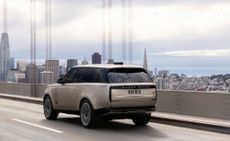 Range Rover’s positive reboot: the best 4x4 flagship?
Range Rover’s positive reboot: the best 4x4 flagship?‘Less thrusting and more soothing’: we take a drive in the new-for-2022 Mk5 Range Rover and find it smoothed and refined, inside and out
By Guy Bird Last updated
-
 McLaren’s flagship supercar has still got what it takes
McLaren’s flagship supercar has still got what it takesFive years after its launch, the McLaren 720S is still the purist’s supercar of choice. Few cars can go faster and yet remain so precise and amenable to drive
By Jonathan Bell Last updated